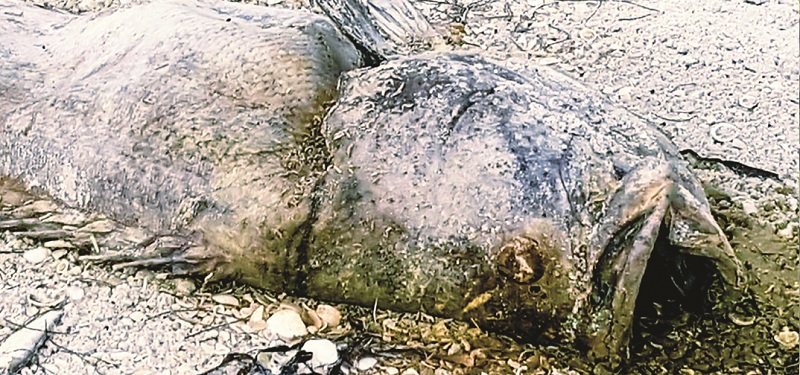Stop Feeding Florida’s Toxic Blooms NOW
Stop Feeding Florida’s Toxic Blooms NOW
The bad news keeps piling up. Toxic blooms on Florida’s west coast are getting worse. The east coast just saw its first official beach closure. New analysis shows Lake Okeechobee pollution spiking. And Florida’s Department of Health is misinforming the public about health risks. Things look bleak right now.

Dead dolphins, manatees, sea turtles, even a whaleshark have washed up on southwest Florida beaches this summer. Red tide invaded the coast from Tampa to Sanibel, also killing gamefish by the ton: tarpon, snook, redfish, grouper, and more or less everything that swims is being trucked to landfills. On the other side of the state the situation isn’t much better: Toxic blooms surged back this week, with dead fish and building concern over the connections between these almost annual events and serious human health risks.
Virtually everyone who talks to news media agrees that it’s all a tragedy, a disaster, a shame. What we’re not hearing on the news is how avoidable it is. The fact is the collapse of South Florida’s waterways is preventable. That’s the good news.
We can stop this, and not in ten or twenty years. That’s because we–humans, and the way we manage Florida’s water–are doing this damage. And we can un-do it. Here’s how:
Toxic blooms–both Karenia brevis (red tide) and Microcystis aeruginosa (toxic algae)–need food. Apologists say these blooms are natural, which isn’t a lie. But there’s nothing natural about how we feed them. The nutrient buffet that churns out of Lake Okeechobee, blasting massive volumes of phosphorus and nitrogen into nearshore waters, is man-made.
There’s plenty of blame to go around, from industrial-scale fertilizer (the big one) to partially treated human sewage dumped in rural watersheds, to urban runoff, we’ve turned the lakewater into steroids for toxic algae and red tide. And then we inject it onto our estuaries when the Army Corps discharges that water into our rivers and coasts.
There are long-term solutions Florida desperately needs to end this, including cutting the discharges with infrastructure to redirect and clean water from the lake to bring Florida Bay back to health, and slashing the nutrient pollution entering the lake in the first place.
But there’s a near-term solution that could have prevented 2018’s Summer of Death on both coasts, and might prevent the same thing from happening next year: Officially shifting our water management priorities.
Feeding toxic blooms is exposing communities to unacceptable health risks, to say nothing of destroying some of the best inshore fisheries on the planet, along with the businesses that rely on them. We can stop it by making the protection of human health, including from exposure to algae-borne toxins, a priority for government agencies that control our water.
If the Army Corps needed to reduce the risk of exposing people to toxic discharges, they might store less water in the lake, which would also reduce the risk of a dike failure. SFWMD’s Ernie Marks testified before congress that people who need water will still get it even if the lake were historically low, so no one would have to lose–unlike this year, when just about everyone in South Florida lost.
The images in the news are disturbing. The smell on the beaches is even worse. But understanding the problem and knowing that there’s something we can do about it right now should give everyone who cares about these issues something to be hopeful for. Nature is resilient. Our water can recover in a hurry. The health risks we face today can become a memory next year.
It’s up to us: If we want to, we can change the policy today. All it takes is courageous leadership and educated voters. We have both.


